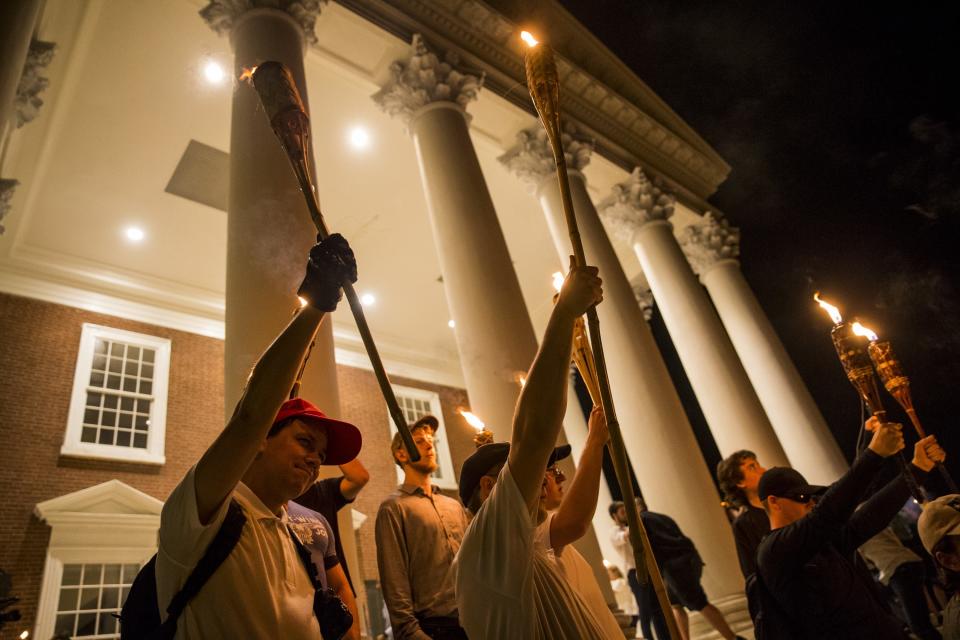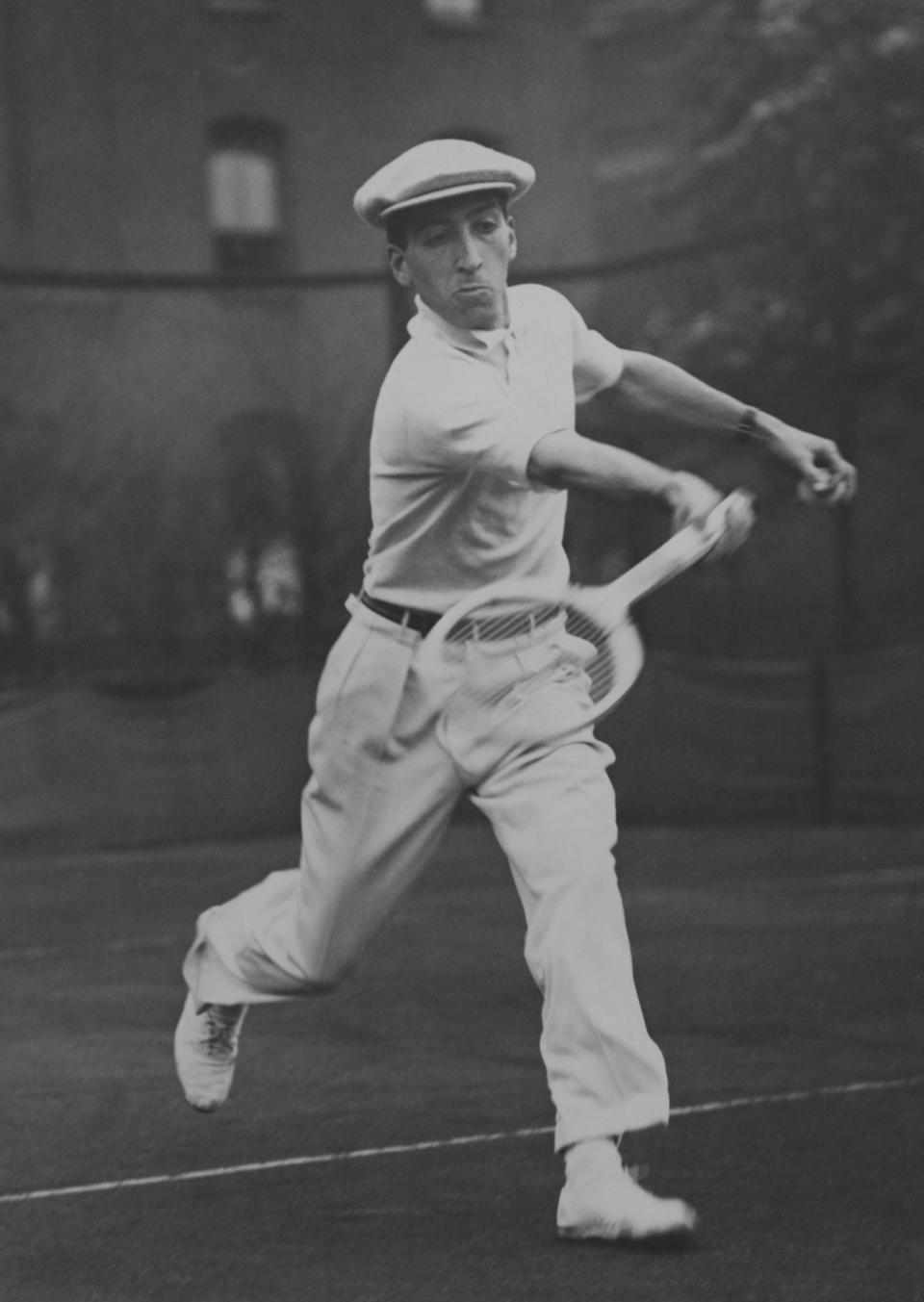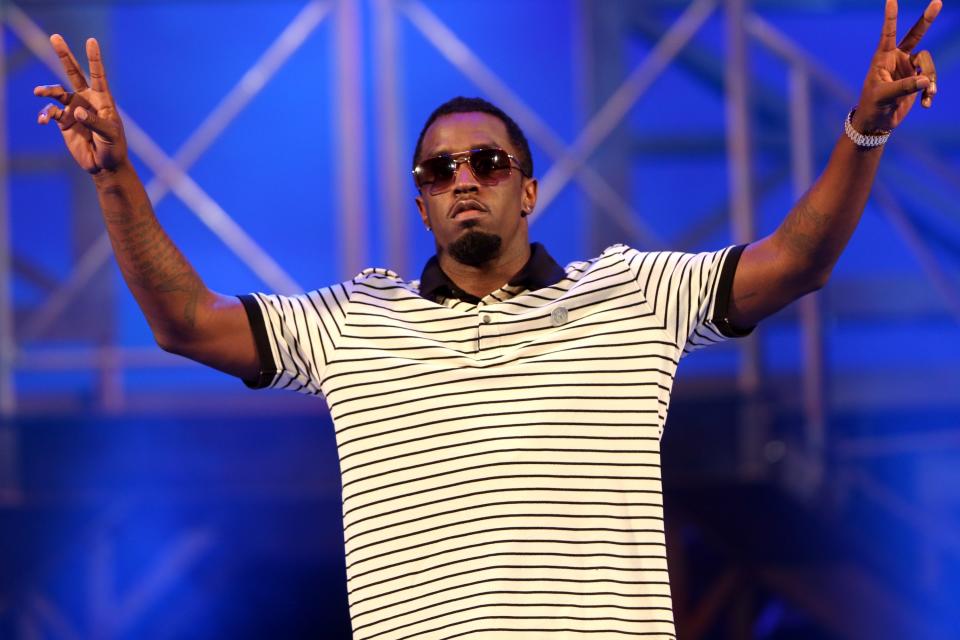How Polo Shirts Became a White Supremacist Uniform
In this op-ed, Jared Michael Lowe explores the history of the polo shirt and its current iteration as a white supremacist uniform.
In the weeks following the events in Charlottesville, Virginia, AJ+ posted a video that quickly went viral. The video shows a man stripping off a white polo shirt in the midst of counterprotests in Charlottesville to camouflage himself in the streets. It’s been plastered all over social media, racking up more than 850,000 views, with many chiming in on how black and brown bodies cannot simply shed their identity and "blend in." In removing his white polo shirt, the young man (whose name is not revealed in the video) proclaims that it’s a “fun idea” to say white power. Yet the most glaring and distinctive part of the video is the guy ripping off his white polo shirt and keeping on his khaki shorts. It was his white polo shirt that would have given him away as a white nationalist.
It was his white polo shirt that would have given him away as a white nationalist.
The polo, which has gone from teatime at country clubs to appearing in rap videos, is now becoming the new emblem of Vanguard America – the white supremacist group that "opposes multiculturalism and believes that America is an exclusively white nation," according to the Anti-Defamation League.
In images splashed across social media of white nationalist, neo-Nazi, and Ku Klux Klan rallies, you can’t help but notice the sea of polos — mostly white and mostly worn with khakis — mixed in with men in straight-leg denim, long-sleeved or short-sleeved button-down shirts, or baggy cargo shorts. Almost all have short, cropped hair, some exactly modeled after the high and tight side-fade famously worn by white nationalist Richard Spencer. Juxtaposed with their tiki torches and Confederate flags and signs scribbled with “White Power” on them, one has to ask: Did they pick up the polo in the same place they picked up the torch?

White Supremacists March with Torches in Charlottesville
Anadolu Agency/Getty ImagesFor what it’s worth, the polo is a fashion staple. In the '70s and '80s, polos were peak WASP (White Anglo Saxon Protestant) cool, a foundation of fashion designer Ralph Lauren’s style empire. The style has tapped into the cells of everyday wear. Your dad owns probably a thousand of them. Def Jam cofounder Russell Simmons does yoga in them. President Donald Trump golfs in them. Its universality is exactly why white nationalists and neo-Nazis are making it the trend du jour. They are college-educated, employed men who have the privilege and luxury to appear organized and, as Anna Silman from The Cut pointed out, to convey the message they are clean-cut and straight-laced.
Its universality is exactly why white nationalists and neo-Nazis are making the polo shirt the trend du jour. They are college-educated, employed men who have the privilege and luxury to appear organized, and to convey the message they are clean-cut and straight-laced.
Yet, how did the polo shirt become so beloved by white nationalists?
In short, there’s no concrete answer. First introduced as an alternative to a much longer and more constricting version worn in tennis matches, the piqué polo shirt was created by tennis player René Lacoste in the 1920s. By 1927, Lacoste placed a crocodile emblem on the left breast of his shirts because the American press had begun to refer to him as "The Crocodile," and churned the concept into a thriving clothing brand.

Lacoste At Highbury
When Frederick John "Fred" Perry, a British tennis player, introduced his own version of the tennis shirt with his own brand in 1952, using a laurel wreath for a logo based on the original symbol for Wimbledon, it was available only in white. The brand would later include more colors and became a sartorial hallmark by the 1960s that enticed both mod and working-class British skinhead cultures. Most recently, right-wing activist group, The Proud Boys, adopted the black-and-yellow Fred Perry polo shirt as a uniform. In addition to Dr. Martens, the Southern Poverty Law Center includes Fred Perry in a glossary of "racist skinhead" terms. In July, Fred Perry chairman John Flynn released a statement denouncing the use of their shirts, to CBC Radio's As It Happens: "Frankly I could send you a press release but no need. A little investigation into Fred the man and Fred Perry the company would reveal a lot. Fred was born the son of a socialist MP [and] became world tennis champion at the time when tennis was an elitist sport. He started a business with a Jewish businessman from eastern Europe. The brand was adopted by the mod movement and systematically has been associated with a diverse group of subcultures from reggae to punk to Brit pop. It is a shame that we have to even answer the question. No, we don't support the ideals or the group that you speak of. It is counter to our beliefs and the people we work with."
By the 1970s and well into the later part of the '90s, the polo became the cornerstone of preppy chic. They became tentpoles for Americana fashion houses like Ralph Lauren, Brooks Brothers, and Tommy Hilfiger seemingly eager to cash in on selling a luxurious lifestyle while capitalizing on the jet-setting experiences of the rich and mostly white in their advertisements. Yet this classicism was challenged when the polo became a hallmark within hip-hop culture.
Starting in the 1980s, rappers from the Bronx to Atlanta to Los Angeles wore multicolored polo shirts from POLO Ralph Lauren, Tommy Hilfiger, and Lacoste as a way of capturing and signifying the “American Dream,” while doing an about face to a mostly white industry that did not design those shirts with an African-American clientele in mind. It was not uncommon when turning on MTV in the '90s to see everyone from the Notorious B.I.G. to Outkast wearing polo shirts in various shades of purple, blue, and gold with designer emblems on them. Polo shirts became so common in hip-hop, that urban lifestyle brands like Sean John (Sean “Diddy” Combs’ eponymous label) and Jay-Z and Damon Dash’s Rocawear brands carried them.

Macy's Passport Presents: Glamorama - 30th Anniversary In Los Angeles - Show
Christopher Polk/Getty ImagesToday it’s hard to imagine walking down a men’s aisle in Target without seeing a polo shirt. Most polo shirts, like golf shirts — which have a pocket on the left side — are made with synthetic fibers like rayon and polyester that make it cheaper to produce and easy for mass retailers to cash in on the classic trend.
In the days since the AJ+ video went viral, The Washington Post’s fashion critic Robin Givhan called out the fashion industry to take more of a stance against normalizing neo-Nazis and white nationalists. “White nationalists are moving through communities cloaked in the most mundane, banal kind of fashion. Clothes that do not inspire a double-take. Clothes that are acceptable and appropriate. Clothes that make them look like they belong,” she wrote in her column. When it comes to the polo shirt — now a commonly worn piece of clothing found in nearly everyone’s closet — it’s hard not to notice its current white nationalist, politicalized state. And the unspoken endorsement that goes along with it: Just like polo shirts, racism, white nationalism, and KKK rallies are as American as apple pie.
Related: This Brand's SWASTIKA Shirts Just Inspired a Major Boycott
Check this out:

